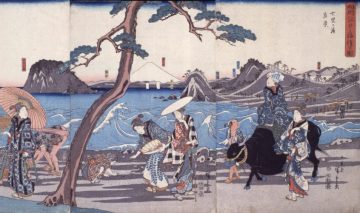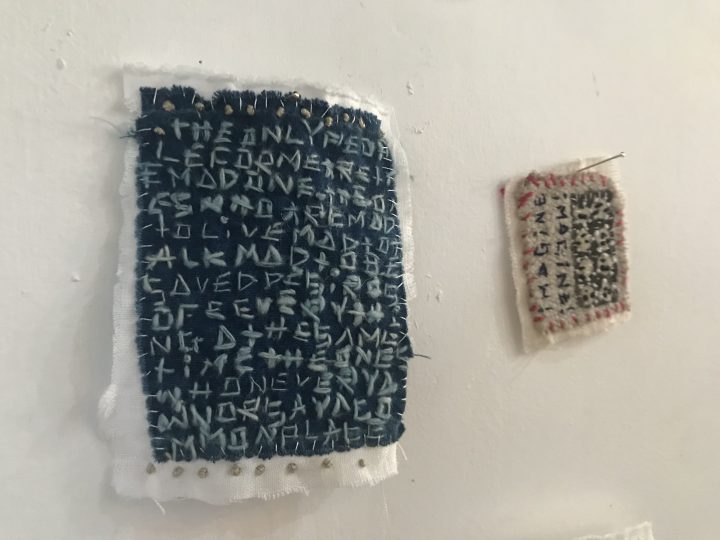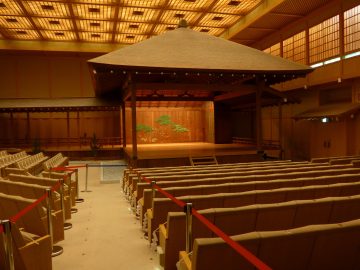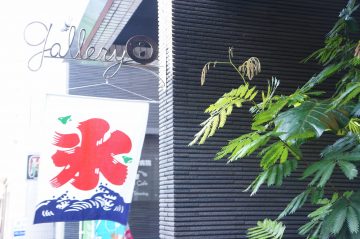Numen / For use interview

We interviewed Numen/For Use, a Croatian-Austrian artist collective who are making their first appearance in Asia.
Q1) About Numen/For use.
— This is your first time in Asia. Thank you for coming to Japan. I think some people in Japan will learn about Numen/For Use through this smart illumination. First, I would like to ask about the artist collective NUMEN/FOR USE. What kind of organization is NUMEN/FOR USE? Also, please tell us the origin of the name.
We (Cristoph, Nikola and myself [Sven]) founded a group under the name ForUse in 1998, while still studying at the Industrial Design Universities of Zagreb and Vienna. The name “For Use” comes from our work at that time, which was focused on functional and reductive design. A year later, we founded Noumen, a collective of artists capable of realizing any project beyond the boundaries of industrial design. The origin of the name “Noumen” comes from the word “noumenon” in the minority literature we were reading at the time. It is a transcendental object, something that can be perceived without the senses. In other words, a phenomenon means something that is relative.
Q2) About the work
-Please tell us about your previous works and this one. NUMEN/FOR USE has created many works that allow the audience to participate. I understand that this one is also a work that you can enter and enjoy. However, the material of the work has changed from the white tape used in the past to a black net. Is there a reason for this?
The main reason for changing the material of the work to nets was because I wanted to create a more permanent and flowing landscape, whereas the tape installations were ephemeral as a material and very site-specific. I used the color black simply because that is the material used for the shade nets, and it worked well to emphasize the overlapping of the net-scape I envisioned. I am already thinking about incorporating white nets and composite colored nets using yellow, magenta and cyan in future installations.

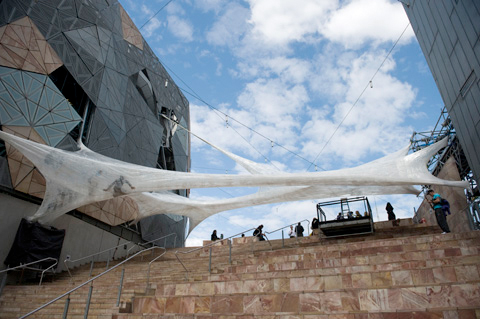
-This time, your exhibition will take place in Yokohama, a tourist destination and a port city. Moreover, your work will be presented at "Smart Illumination," so I imagine it will be a collaboration with a lot of night scenes (illuminations). When creating your work, what aspects of the exhibition space did you pay attention to? Also, what are your expectations for the presentation in Yokohama?
I really like the idea of a "night view". Like the tape installations, the net looks best when illuminated. I wanted to isolate the work from its surroundings, create an artificial horizon and make the whole thing seem to glow from within - hence the Net Blow-Up, a completely new prototype. In the process, the net became an autonomous, expansive installation and also acquired a new dimension: it appears silhouetted against a translucent screen that glows against the night sky.
--What would you like the guests to feel?
We hope that this rare opportunity to exhibit our new works will have a positive influence on both the visitors and the works, and that the festival will become a place where the people of Yokohama can gather and relax.
Q3) About "Hikari"
—What does "light" mean to you? Please feel free to answer.
Light is fascinating, but I tend to incorporate it tangentially rather than directly as a subject. In tape installations, where translucent tapes are folded over, light is always potentially important, causing interesting diffusion in the overlapping layers of tape, resulting in a unique light. Nets are also translucent due to their perforated structure, and they capture light well. I often work with membranes (sheets made using thick-film printing technology) and transparent materials, whose appearance changes depending on the light that penetrates them and its reflection. In scenography, I think that starting from a conceptual manipulation of light and shadow is essential to creating the final image. One of our experimental works, Numen-Light, uses lighting as its essence to express a slight disturbance or unrest in the endless light-scape.
Q4) Please give a message to everyone in Japan.
We are looking forward to our first exhibition in Japan and Asia. We are especially excited to present two artworks (Tape Tokyo/Net Yokohama) simultaneously in a completely new region and cultural sphere. We realized that our own sensibilities are very close to the character and spirit of the Japanese people, so we are sure that we will come back to Japan in the future.
▼ English page ▼
Q1) Thank you for coming to Japan. This is your first time to present your work in Asia. Smart Illumination Yokohama will be a great opportunity for Japanese people to get to know NUMEN/FOR USE and its artwork. Please let me start with a few questions about the artist group, NUMEN/FOR USE. What sort of group is the NUMEN/FOR USE? Where did this name come from?
- We (Cristoph, Nikola and myself) started the group under the banner For Use back in 1998 when we were still in college of industrial design in Zagreb and Vienna. Monicker “For Use” came from our then obsession with functionality and reductive design. A year later we established Numen as a collective identity covering all projects actualized outside the sphere of industrial design.
“Numen” derives from some esoteric literature we used to read at the time – “noumenon” means a transcendental object, one graspable without the use of senses – ie. the opposite of phenomenon.
Q2) Please tell us about your current artwork as well as your past work. NUMEN/FOR USE has produced numerous interactive artwork where the spectators could participate in. The current exhibit also has the same concept in that the spectators can be part of the artwork and enjoy the experience. However, in terms of the material used, it has changed from white tape to black net. Is there any reason for this change?
- Our main reason for this switch into Net objects was the wish to produce a more permanent floating landscape, since our Tape installation was by nature starkly ephemeral and very site specific.The color black is simply the standard shade used for safety nets and it worked well in emphasizing gradients of visibility in the overlapping layers of the envisioned net-scape. We are, however, already contemplating the use of white or yellow-magenta-cyan combo nets in our future installations.


This time, the exhibition will be held in tourist part of Yokohama harbor. Also, as part of the Smart Illumination, the artwork will be presented among other illuminations and as a night piece. With that in mind, how did it affect your creative process ?Also, what is your expectation in terms of presenting in Yokohama?
- We really liked the idea of a “night-piece”. Tape installations always looked best while illuminated and for Net to work in the same way we needed to isolate it from the surroundings, to create an artificial horizon and make the entire structure seem illuminated from within – which led to the construction of a completely new prototype for the Yokohama event – the Net Blow-Up. Through this process the initial Net became a self-standing, inflatable enclosure and acquired a new, outside aspect; a shadow- play of silhouettes on the translucent skin of the light bubble against the backdrop of the night sky.
If you have anything in particular that you hope the audience to experience through your artwork, please let us know.
- We expect a good interaction with the visitors and a great opportunity for our new piece to serve as a proper community hammock to the people of Yokohama for the time of the Festival.
Q3) What does “HIKARI” (which is “light” in Japanese) mean for NUMEN/FOR USE? Please feel free to make any comment.
- Hikari fascinates us but we generally don't tackle it directly in our work but rather tangentially – it was always latently important in the semi-transparent folds of the Tape installation, which has a specific quality of light where interesting diffusions happen in the layers of tape. Net is also semi-transparent by its very perforated structure and plays with gradients of light permeability. We actually often work with membranes and transparency levels relying strongly on light and its refraction through materials.In our theater work we always conceptually start from darkness and light manipulation is crucial in the creation of the final image. One of our experimental objects, Numen-Light, has illumination as its essence, showing a slightly disturbing, infernal capacity of an endless light-scape.
Q4) Do you have any messages or comments you would like to share with the Japanese spectators?
- We are very excited to be exhibiting in Japan (and Asia for that matter) for the first time, especially with the fact that we will present ourselves to this completely new territory and culture with two art-pieces simultaneously (Tape Tokyo and Net Yokohama ). Since we find our own sensibility to be very close to the Japanese character and spirit, we are pretty certain we will be returning in the future.
